3. Apollo Photography
The equipment and methods used to take photographs on the Moon are well documented, particularly on the Apollo Lunar Surface Journal (ALSJ) here http://www.hq.nasa.gov/alsj/apollo.photechnqs.htm and http://www.hq.nasa.gov/alsj/a11/a11-
The images themselves are available in a variety of locations, including the following:
Project Apollo Archive and also here.
Gateway to Astronaut Photography of Earth
and indirectly by searching here: http://www.archive.org/, a US national archive of various media. Searching by mission photograph number can reveal very high quality TIFF images (around 50Mb each), although their quality is not necessarily any greater than jpeg images a fraction of that size.
The sites listed above generally have a link to high quality versions, although this is not always the case. The Apollo Image Gallery contains the most complete record of all mission photographs, but does not necessarily always have the highest quality image scans.
The cameras used on the lunar surface were the Hasselblad EDC (figure 3.1) fitted with a high quality 80mm Zeiss lens.
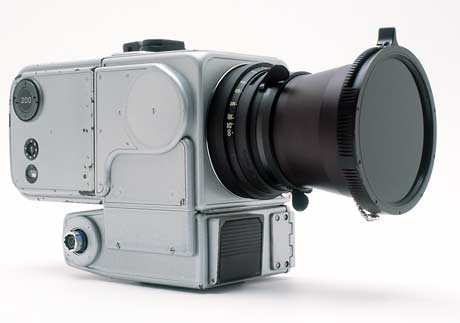
Figure 3.1: The Hasselblad EDC (Source)
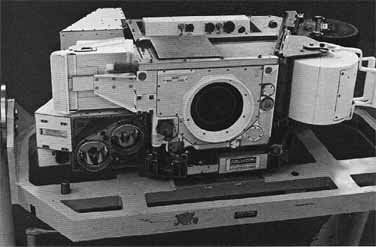
Figure 3.7: The Fairchild Metric Mapping Camera. Source
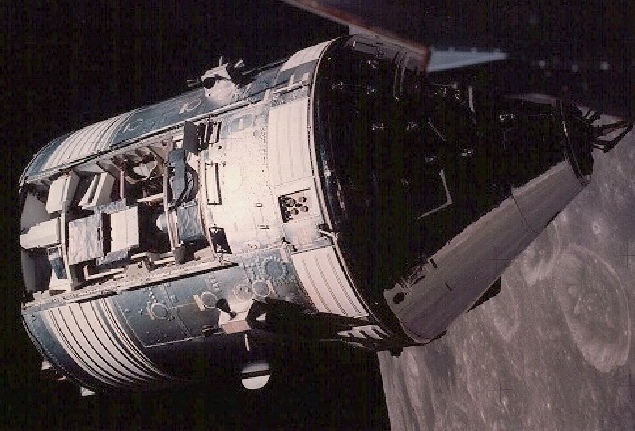
Figure 3.8: The Apollo 17 SIM bay viewed from the LM. Source
Their operation is described in detail here Fairchild Mapping Camera, here A View from Orbit, and also here Apollo Metric Photography. The data from the Apollo 17 mission that features the Earthrise image are described here: Support Data.
As the service module element of the CSM was discarded before re-
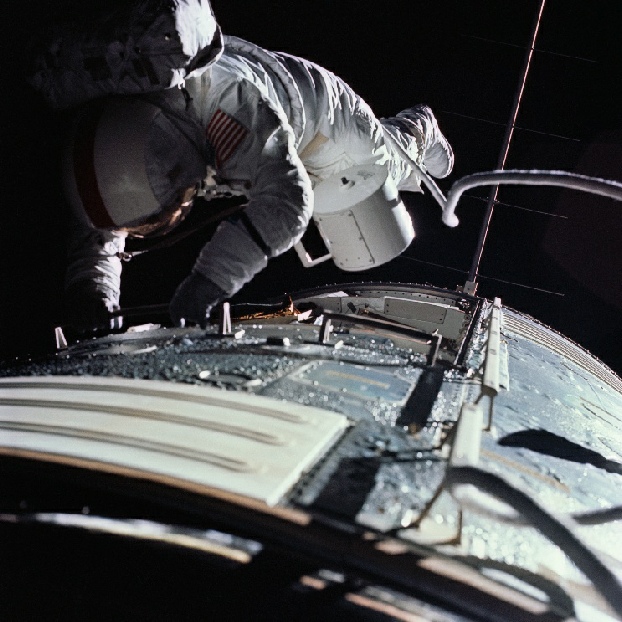
Figure 3.9: Apollo 17 astronaut Ron Evans retrieves the SIM bay camera magazine while en route to Earth. Source
After splashdown, the film magazines were transferred to a technician who would inspect them for signs of damage and receive instruction from the astronauts about individual photographs that may be of significance.
The magazines were then sent by courier in temperature and humidity controlled cases (also used to transport them before launch) to the Manned Spaceflight Centre in Houston, where they were opened and inspected in the presence of senior technicians and staff. Apollo 11’s lunar surface magazines went through a decontamination process just in case something might have hitched a ride with them, but this became unnecessary once the likelihood of space-
The processing equipment was thoroughly cleaned and checked before use, and the films were processed in carefully controlled environments with multiple checks on their condition before and during their development. Sample strips of each film type were sent through the development process to check their condition, and samples of the returned film (several blank frames were exposed at the start and end of each magazine) were also processed independently of the exposed images.
Each photograph is indexed according to mission, film roll, and then a unique number. Thus image AS11-
The original films, once a master duplicate was taken, were committed to cold storage where they remain to this day. All versions of the Apollo images are from the duplicate copy, which itself will have been duplicated many times. There are, therefore, many different copies of the original film in circulation, which is worth bearing in mind when confronted with those who claim that there has been some interference with those images: many copies are available of the original films, and occasionally these duplicate copies (or at least part of them) can become available in auctions.
As will be discussed later, video footage also featured the Earth. The most documented video footage featuring Earth was made in a number of TV broadcasts from Apollo 11. These broadcasts were made using the Westinghouse Apollo Lunar TV Camera (figure 3.10), which had a range of standard, wide angle and telephoto zoom lenses.
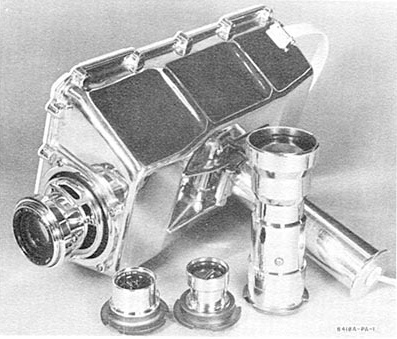
Figure 3.10: The Westinghouse Apollo Lunar Camera: Source
The camera could operate at 10 or 0.625 frames per second, and could be operated from the lunar surface or from the CM. At 10 fps, each frame consisted of 320 lines.
A more general discussion of Apollo TV cameras can be found here Apollo TV (NASA), and on this website TV from the Moon by the author of a book on the subject. This interesting article discusses the role of TV in the ‘Space Race’, and includes details of scheduling, the way the programmes were made and budgets. One of the tables clearly illustrates the declining interest from US networks in the Apollo missions -
Another source of moving pictures is the Data Acquisition Camera, or DAC.
They were mounted on the Lunar Module, and there was also a slightly different model used on the CSM to film eg docking manoeuvres. The DAC was capable of a variety of running speeds, from 1 fps to 24 fps depending on the subject. The entire Apollo 11 moonwalk was filmed using the LM's DAC as a timelapse movie. The DAC’s were often mounted in a position that allowed them to film outside using a mirror, and quite often this means that some or all of a magazine’s contents were reversed.
One final camera to discuss could be found in the later missions, and was remarkable not just because it transmitted live TV from the moon, but also because it was operated by remote control from Earth. It’s official name was the Ground Controlled TV Assembly (GCTA) and was mounted on the Lunar Rover (LRV).
Operated by William Fendell and his team, it allowed the crew to be observed as they went about their EVA tasks and gave unparalleled views of the lunar surface as they did so. At regular intervals (usually when the astronauts were out of shot) Fendell would pan around and zoom in on Earth, and screenshots of those views will be used where they are available.
The GCTA films are a subject of controversy in the minds of the conspiracy theorist as at the end of Apollo 15, 16 and 17 they rovers were parked at a safe distance from the LM and the remote camera used to film the launch of the ascent module back to orbit. Conspiracy lovers can’t seem to comprehend that it is possible to film and track the launch of an object despite there being a 1.25 seconds delay in transmission time. This despite the hours of practice that Fendell and his team had of dealing with this delay during the missions and the exact timings of the launch sequence being known.
Figure 3.11 shows the cameras mounted on Apollo 15 & 16’s rovers, taken from the Apollo TV document linked to above, featuring images taken actually on the moon.
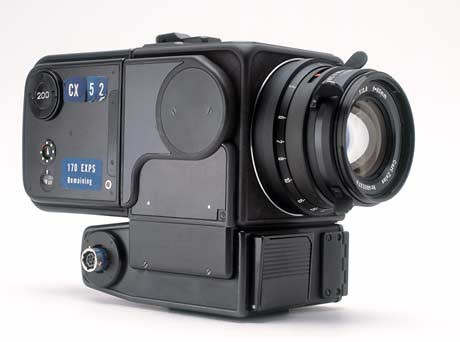
Figure 3.2: The Hasselblad EL (Source)
The film itself was a modified version of Ektachrome, which used a high strength polyester base (much stronger and more stable, which allowed it to be thinner) and a high speed emulsion to capture the image. The emulsion itself was developed for use in the top secret ‘Corona’ military satellites, but was specifically declassified to allow its use in the Apollo programme.
A Reseau plate, marked with ‘fiducial’ crosses, was built into the camera to check for image distortion and allow for the calculation of angular distances. Thee crosses often become obscured in over-
Also present on this back plate for lunar surface cameras (at least in later missions) were the last two digits of the camera’s serial number, which helped to identify the photographer as they were assigned to specific astronauts. Apollo 15’s were 31 and 38, Apollo 16’s were 33 and 39, and Apollo 17’s were 23 and 32. These numbers, when they are visible, have proved invaluable at identifying who took which photo, which is probably why they were introduced and also at identifying those cameras that mysteriously made their way back to Earth when they were supposed to have been discarded.
The camera’s silver body helped to reduce the thermal load on the camera, and a number of other modifications helped make the camera more suitable to the missions. Lubricants were removed, as these will perform differently in the extreme temperature environments possible on the moon, and much better electrical connections installed to improve performance and (more importantly) reduce the risk of sparks.
Weight was reduced, as was the number of moving parts, mostly by removing those components that were not needed. Viewfinders, for example, were pointless on the lunar surface because the suit helmet would have made them impossible to use. The shutter release button, f-
The cameras could be hand held or chest mounted, and a sighting ring allowed the astronaut to use them against their helmet visor. All of the cameras used on the lunar surface were left behind, and only the magazines were returned.
Astronauts were trained extensively in using the cameras. As they were unable to put the cameras to their eye to frame images correctly, they needed to be able to work out exactly what their camera was pointing out -
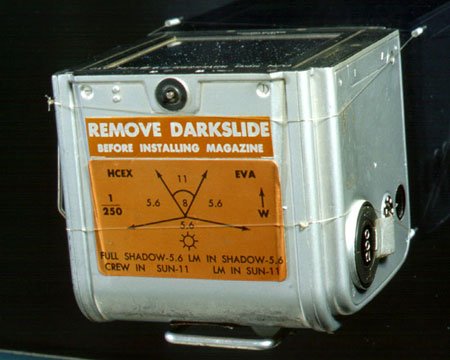
Figure 3.4: An Apollo Hasselblad 70mm magazine: Source
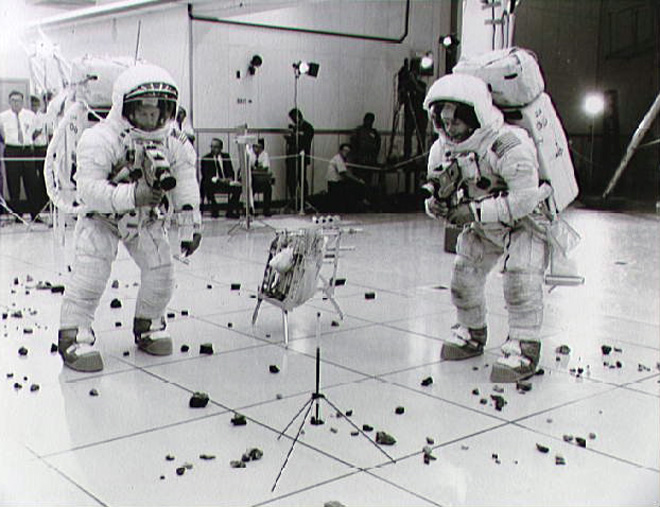
Figure 3.6: Alan Bean and Pete Conrad working out their documentation procedures: Source
They also needed to be familiar with some basic principles of photography, particularly the relationship between aperture and exposure. At the risk of stating the obvious, unlike modern digital photography where auto settings can do a lot of the work and where a mistake is easily deleted and rectified, the crews had to have sufficient understanding of how lenses behave in order to get photographs right first time. It’s often suggested by people who haven’t examined the photographs in any great detail that they are all perfect and that this is somehow suspicious. The reality is that many of the images are over-
The key things that the crews had to work out were how to use the f-
To get rid of one tired old chestnut immediately: the reason no stars (or at least very few) appear in Apollo images is very much related to the high shutter speeds required to take photographs of scenes lit by light reflected from bright lunar or terrestrial surfaces, as well as by the Sun. To quote Charlie Duke in a lecture I attended, ‘it was always broad daylight on the Moon’.
In fact several Apollo missions captured stars and planets, either by serendipity or as part of the low light photography program. See my website on the subject here.
The Moon’s light is sufficient to read by on Earth -
An additional source of lunar images is the Metric Mapping Camera, and as one set of images from Apollo 17 does feature photographs of Earth it is worth describing.
This camera was housed in the body of the CSM's Scientific Instrument module (SIM). The view presented to the camera depended on the angle of the CSM relative to the ground, and views were usually vertical but occasionally oblique.
The 76mm lunar terrain mapping camera was complimented by a smaller stellar camera which, combined with a laser altimeter, was used to give a precise position of the CSM, and therefore of the photographs. The camera is shown in figure 3.7, and its SIM bay location in figure 3.8.
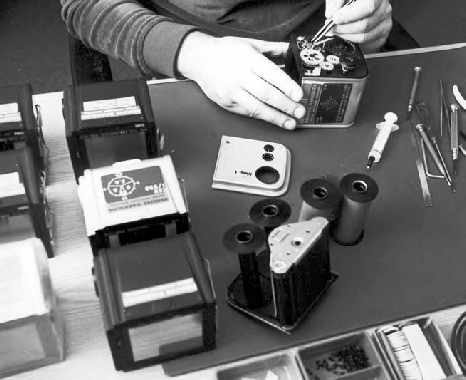
Figure 3.5: Left, a Hasselblad roll sold on eBay and right A technician works on a Hasselblad magazine: Source
Using all these state of the art pieces of equipment, the astronauts were able to obtain high quality still & moving images of their journey to and from the moon, and of the lunar surface, and these images can be compared to satellite photographs obtained completely independently to verify that they were taken where they were claimed to be taken.
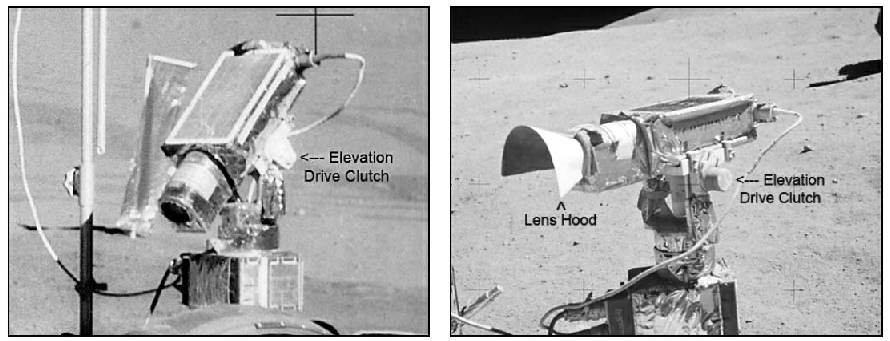
Figure 3.11: Apollo 15 (left) and 16 (right) GCTA cameras in situ. Source given in text.
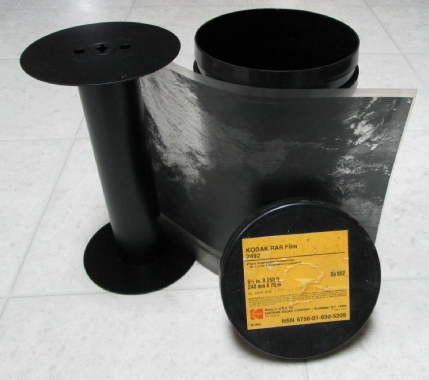
The surface camera was a modified version of the EL 500 (figure 3.2) that featured a number of specific features (the EL 500 camera was used on board the command module and in Apollo 8.). Instead of loading the film directly into the camera, as would have been the case with standard film cameras of the day, the film was contained in a magazine (figure 3.4 and 3.5). The 70mm film used thinner than standard film and as a result up to 40 feet of film (sufficient for up to 200 images) could be packed into each magazine. After taking an image, an electric motor wound on the film.
Later missions (eg Apollo 16) used cameras that had interchangeable 250mm and 500mm lenses for zooming in on distant objects, and also an adapted Nikon 35mm camera for use on the Command Module.
The lens, a Biogon 5.6/60, had 8 lens elements in 5 groups and used a Synchro-

Figure 3.3: View of the Reseau plate, with the pentagon shape of the 5 bladed aperture visible in the centre. Source.